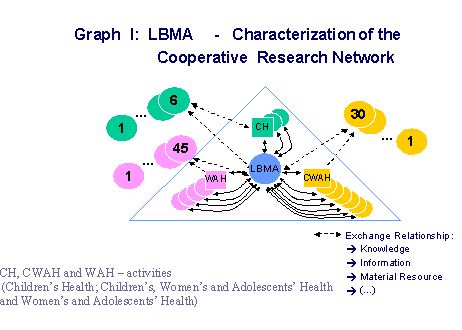portada > Programa > P49 - The Applied Molecular Biology Laboratory (LBMA/IFF/FIOCRUZ): an operational model in planning for a strategic health research network
P49 - The Applied Molecular Biology Laboratory (LBMA/IFF/FIOCRUZ): an operational model in planning for a strategic health research network
Introduction
The New Techno-economic Paradigm, in the discussion of advance of information and communications technology has both accelerated and facilitated the growth of networking and economic advantages of scale economics for those organizations and individuals who can accumulate specialized knowledge and have access to networks.
Based on the experience of the Fernandes Figueira Institute-IFF/FIOCRUZ with scientific output in the fields of medical genetics and molecular biology, including basic and applied research and in line with perspectives for strategic health research, an activity that combines scientific development and the provision of diagnostic and therapeutic services for the population covered by the Brazilian Unified National Health System (SUS).
Objective
The present study we draw up a plan to develop a cooperative network, which permits reinforce the identification and integration of the different actors who share interest in the Applied Molecular Biology La
boratory-LBMA-IFF’s clinical research area of genetics.
Material and Methods
This case study is based on conceptual references from the literature and a field study we conducted at IFF/FIOCRUZ. During the initial stage we performed a diagnosis of the activities by researchers at the LBMA and systematized their perspectives. During the second stage we used an in-depth interview technique with Laboratory researchers, who are key informants due to their connections with the Laboratory’s research background.
The collection instruments included a questionnaire with 20 closed questions and one open-ended question, grouped according to thematic lines in keeping with the study’s objectives. We approached the following content variables: a) planning activities, in relation to the possibility of implementing a services network with shared objectives; b) opportunities generated by the LBMA for promoting innovation in diagnostic services and process improvement, or contemplating organizational
change related to the application of productively generated knowledge; c) self-sustainability of the LBMA through non-budget fundraising (involving public-private interaction) or by differentiation of services or complementariness of competences or tangible assets (laboratory equipment infrastructure) with partners; and d) the process of organizational change with the perspective of flexibility, autonomy, and marketing as a way of maintaining the institution’s social commitment.
After reading a “Free and Informed Consent Form”, the interviewees were asked to evaluate and check with an “X” the choices that best expressed their opinions on the different variables, on a scale from 1 to 5 according to the degree of relevance they ascribed to the implicit proposition in each question.
The last question (open-ended) allowed an inventory of the formal and informal partnerships and/or forms of cooperation currently developed in research-related activities at the LBMA, thus constituting a third st
a ge in the field research, the results of which contributed to the analysis of the applicability of these cooperative formats and the interaction mechanisms identified in the case of the LBMA. The interviewees group was with 34 Ph.D., level researchers corresponding to the “Doctoral Staff” at IFF, with research lines in Children’s, Women’s, and Adolescents’ Health; 12 Master’s researchers with related research lines; and 16 managers who also sit on the IFF Management Board, thus providing a total sample of 62 individuals.
Discussion and Results - Potential characteristics and procedures of networks
The establishment of the relationship between various multidisciplinary research groups is the first step toward of the authors to encourage new lines of communication with other research organizations, which include Universities, public and private research business centers and medical and hospital corporations.
With the identification of internal actors, external cooperative partners,
a nd relations of connectivity in the area of knowledge and respective activities, the network (GRAPH I) designed according to the internal development of multidisciplinary activities mapped out through the field research.
Our aim is to strengthen LBMA’s financial support through the joint-production of knowledge and referred services, searching for a competitive position, in an attempt to assign efficiency to the productive process of the laboratory.

The results represent a contribution to the development of management in organizational innovation at FIOCRUZ, based on structured analysis of how to apply the knowledge generated at LBMA/IFF.